Folks, time is flying. It was about a month ago that we set out on that last trip, so perhaps I should finish up my posts on said trip – because there’s more coming.
So let’s review:
We were on a journey from June 14-30, most of which was to England but which began in New York City. Explained here.
So let’s talk about where we stayed.
First of all, who are we? Because that matters. In just a couple of weeks, my travel-type posts will shift in emphasis because I’ll mostly be going solo, and believe me, in the short bit of time that I’ve spent pinning down some stays for the fall, it has been most enjoyable because...it’s just me. And I am very low maintenance (as you will see if you continue to follow me), and can basically stay in a corner of a room or hell, probably the back of a car for days, if not weeks at a stretch, and it’s a lot different making those arrangements than it is to figure things out for a 61-year old female Me, a 21-year old male and a 17-year old male.
But for this trip, well, it was three of us and no regrets, but still, it was three of us – three adults who did not want to share a bed, no. And booked and paid for by a cheapskate, so there’s that, too.
So here you go:
New York City: The Wall Street Inn: This was a new one for us. In the recent past, we’ve most frequently stayed at the Leo House in Chelsea – a unique Catholic guest house for which I’ve usually been able to score some deals because I’ve booked and paid for the stays ahead of time. Not so this time – I suppose demand was higher, and there just wasn’t anything available. So, via booking.com, I found this one, and it turned out great.

We are familiar with and fairly frequent visitors to NYC (my oldest lives there) so there was no need to have some definitive Midtown or Times Square experience, plus he lives not far from the Financial District, so it worked out. Three of us fit in one room for a bit under $200/night, the place was very clean and nicely run – by…I hate to say it in the current climate, but judging from accents either eastern Europeans or Russians (not sure which, sorry), and I’d definitely stay there again.
England!
Oxford: The Red Mullions Guest House Staying super close in to Oxford would have been quite expensive, but this lovely guest house was about a ten-minute bus ride from the center. We had breakfast one morning, and if we were breakfast-eaters, would have done it more. The proprietors were friendly – making a great deal about the elder son’s “‘tache” – (not ‘stache’ – no – “‘tache'”) – and helpful, the room spacious and clean, and the food excellent.


York: Airbnb. This was fairly dramatic. We were to go to York on Monday, and on Saturday afternoon, I got a message from the owner of our rental that she was cancelling on us. There was work being done, she’d thought it would not be a problem, but it turned out it was.
O -kay. What does one do?
Well, luckily, another was available – and Airbnb came through with a refund and a coupon to make up the difference – and this one had a washer and dryer, which was a bonus. It was a lovely apartment with lots of space, which is what we needed.





Photos 1,2: Interior. 3: the street where the apartment was located; 4: the city gate to the area; 5: the view at the ridiculous hour of something like 4 am from my skylight.
Hexham: The Station Inn. The point of this stage of the trip? Hadrian’s Wall. This was not the most luxurious hotel, but who needs that? It was just what the name suggests – a hotel for travelers near the train and the bus station. The room was clean, the people at reception were super helpful – especially on the next morning when I was trying to get us the heck out of there on the day of a rail strike – and yes, I’d stay there again.


Seahouses: The Bamburgh Castle Inn The most, by per/night measure, expensive stay, but that’s because it was a good hotel in a popular vacation destination. The room was nothing spectacular, but it was clean, with three separate beds and a nice view.

Edinburgh: The Mackenzie Guest House– Again, if you are into fancy hotels, or even higher mid-level American hotels, you would probably not be pleased, but it was fine – we had two adjoining rooms – one with a double for me, and then another with two twins for them – with a shared external bathroom – on the top floor of the guest house. A nice breakfast with a very helpful and kind proprietor. If you want something else, you can pay $200/night more, but I’m not going to….



London: St. Athan’s Hotel: Another shared bathroom situation, this time with more folks, but again – no problem. We had one room with four beds (including a bunk), and there were, I think, maybe four floors of the hotel with four bathrooms for each two floors – that were kept very clean. I think these proprietors were either Turks or Syrians (again apologies for not being able to nail it), and it was located in an area near King’s Cross that had lots of these small hotels. I’d stay there again, no question.



Photo 1: – stairs from our floor to one of the two sets of bathroom that were in between each floor.
It’s expensive to travel, especially with a family. If we weren’t moving around so much, of course my first choice would have been an apartment. But honestly – we didn’t have a bad experience in any of these stays. Probably the Station Inn in Hexham was the “worst,” but even that was fine. You just have to adjust your expectations – the Residence Inn is not the global norm, guys…..








 at
at






 Next stop, after checking out of the hotel, was at
Next stop, after checking out of the hotel, was at 


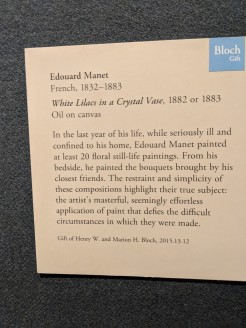









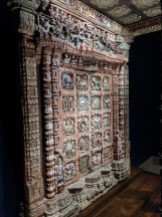











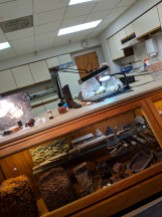




 don’t want to tramp around in the mud and wet leaves and perhaps get rained on again – so St. Joseph it was.
don’t want to tramp around in the mud and wet leaves and perhaps get rained on again – so St. Joseph it was.















































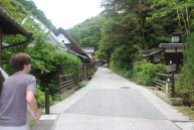






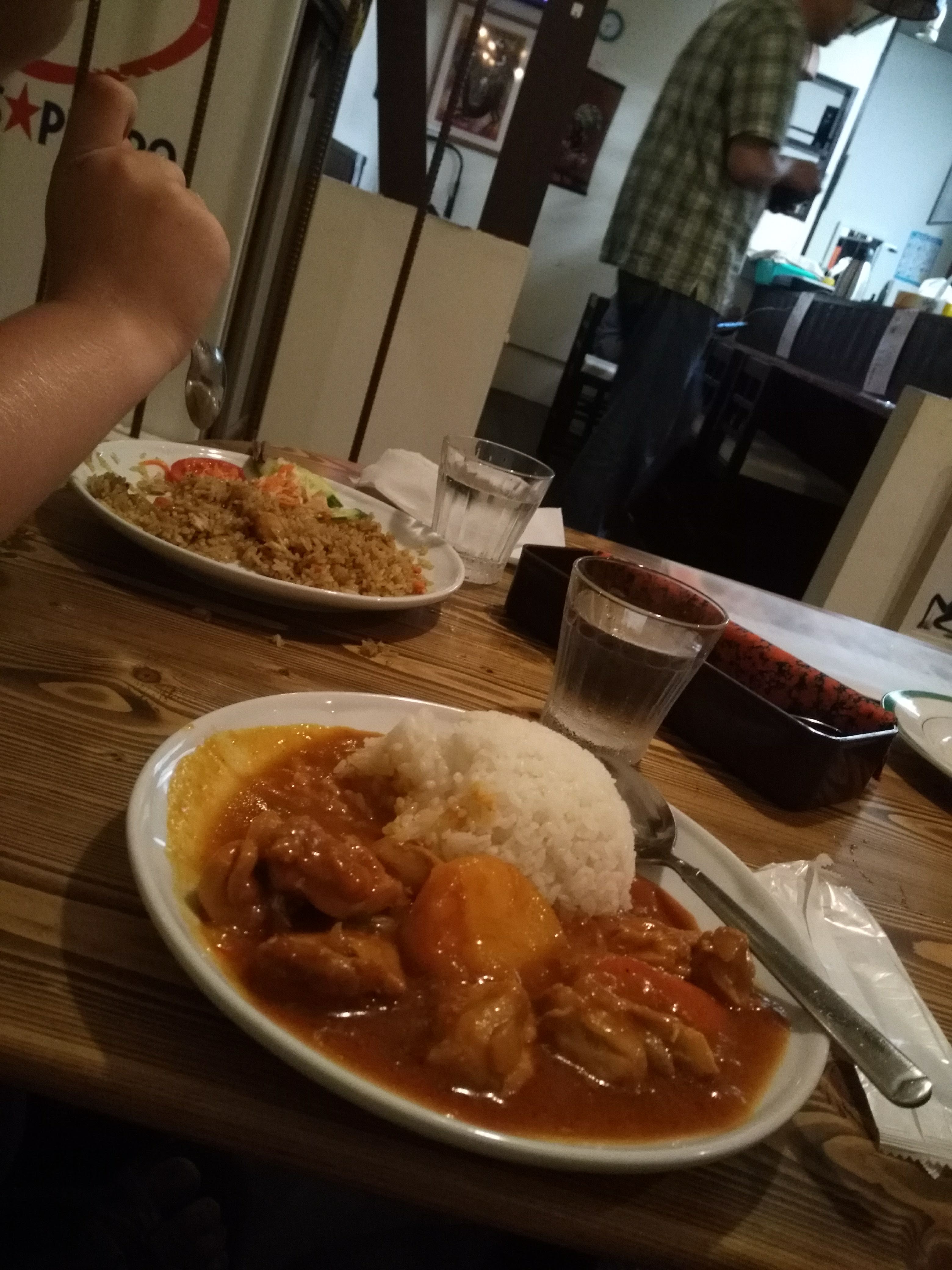 I discovered, right across the street and around the corner, a Tanzanian restaurant. The sign out front said the chef and proprieter was also an English teacher. We’re in. And do you know what? It was delightful. The food was excellent – one boy had a chicken pilau, I had a fantastic stew, the other had fried chicken and fried and we all had samosas. And it was such a pleasure and relief to speak English, easily to someone besides my kids. Even after a little more than week – you forget how relaxing it is not to feel lost in translation, constantly. So thank you,
I discovered, right across the street and around the corner, a Tanzanian restaurant. The sign out front said the chef and proprieter was also an English teacher. We’re in. And do you know what? It was delightful. The food was excellent – one boy had a chicken pilau, I had a fantastic stew, the other had fried chicken and fried and we all had samosas. And it was such a pleasure and relief to speak English, easily to someone besides my kids. Even after a little more than week – you forget how relaxing it is not to feel lost in translation, constantly. So thank you, 








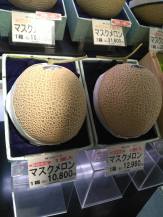





























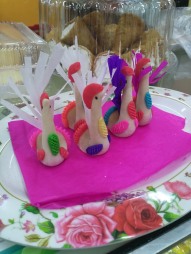






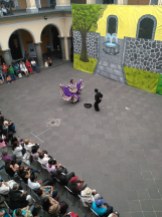
 buses leaving, so it was clearer which was ours. As we did before, we checked our luggage, went through security and then boarded – getting our promised first class snack – A WATER AND A MUFFIN – this time. Although this time, the movie screen wasn’t working – the bus driver even stopped the bus about fifteen minutes out, came back, took out a panel from the ceiling, fiddled around, squinted at the screen, shrugged, returned to the front and kept on driving – screen dark, but we did have wi-fi.
buses leaving, so it was clearer which was ours. As we did before, we checked our luggage, went through security and then boarded – getting our promised first class snack – A WATER AND A MUFFIN – this time. Although this time, the movie screen wasn’t working – the bus driver even stopped the bus about fifteen minutes out, came back, took out a panel from the ceiling, fiddled around, squinted at the screen, shrugged, returned to the front and kept on driving – screen dark, but we did have wi-fi.



























